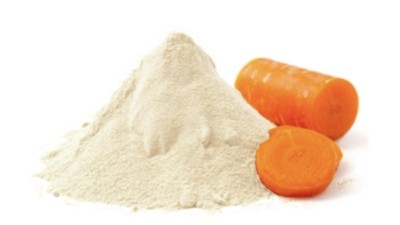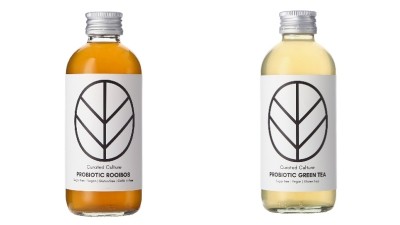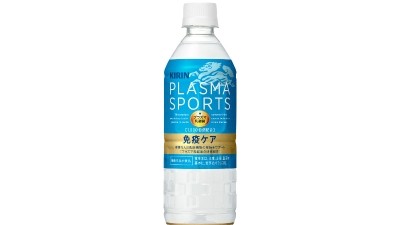Postbiotic promise: Consensus among industry players needed before policymakers and consumers can help fulfil potential - experts

In the recent Spotlight On… Postbiotics opportunities in Asia: Fulfilling potential for future food and supplement innovation interactive broadcast, hosted by NutraIngredients-Asia in association with Kyowa Hakko Bio, several industry experts weighed in on the factors that are driving and impacting the postbiotics sector.
Speaking during the panel discussion, Karen Todd, Vice President of Global Brand Marketing at Kyowa Hakko USA, said that the postbiotics category is growing at 8% to 10% per year. It is projected to reach up to USD3bn in about 10 years.
To achieve these figures, however, industry players need to “put on a unified front to both policymakers and consumers”, according to George Paraskevakos, Executive Director of International Probiotics Association (IPA).
For starters, the definition of postbiotics is a topic that the industry is still grappling with.
“There is no widely accepted consensus of what the scientific definition of a postbiotic is. The International Scientific Association for Probiotics and Prebiotics (ISAPP) has defined it as a preparation of inanimate microorganisms and/or their components that confer a health benefit on the host. But this has not been uniformly accepted by the industry. Some even say that an antibiotic could fit into that definition of a postbiotic. Therefore, clarity is needed going forward,” said Paraskevakos.
Unlike probiotics, which remain alive at the time of consumption, postbiotics are known to have greater product-stability benefits, presenting myriad opportunities in formulation and application.
“Probiotics was defined over 20 years ago. It is now widely accepted and respected; there is an industry built around it; and policymakers have used it to form regulations. In contrast, the different interpretations of postbiotics have made progress difficult for the sector.
“For example, there are a lot of postbiotic innovations in some Asian countries like Japan and South Korea, but they are sometimes marketed as heat-killed probiotics. When policymakers look at an industry that is divided, they are going to impose requirements that are almost unattainable,” Paraskevakos added.
This sentiment is shared by Wai Mun Poon, Principal Regulatory Consultant and owner of Wong SJ Asia.
“Most Asian countries are still trying to figure out how to regulate probiotic products. It will take some time for regulators to better understand the benefits and risks of postbiotics before they can come up with appropriate guidelines. For industry players, it is very important to get consensus among yourselves first, particularly on the definition of postbiotics and harmonisation of technical standards.
“Furthermore, it is not just about educating policymakers, but also the consumers. The role of regulators is to protect the interest of consumers, so if there is strong consumer demand or spending in postbiotics, they would have the responsibility to determine the right approach in regulating them,” Poon explained.
Increasing consumer awareness
One positive thing that has come out of the pandemic is the heightened awareness of probiotics, and their beneficial effects on gut health and immunity. “But when you go into details, you see that consumers are confused about prebiotics, probiotics and postbiotics. Consumer education is a huge challenge, but also an opportunity [to grow the industry],” said Paraskevakos.
Sharing her insights on the South East Asian (SEA) market, Hazel Joy P. Pascua, Senior Product Development Officer at Essential Products and Expertise for Integrated Markets Inc. (EPEIMI), observed that consumers in the region are familiar with nutrients like vitamin C for immunity support.
“While consumers recognise lactic acid bacteria (LAB) as probiotics, the awareness of probiotics’ effect on immunity is low. Postbiotics are a very novel but promising concept in SEA. The marketing strategy should be on consumer education to let people know what sets postbiotics apart from conventional supplements.
“We can promote postbiotic products as a new generation of immune health supplements, but more importantly, companies need to back up their claims with scientific evidence to convince consumers to change their behaviour,” Pascua elaborated.
Putting research into practice
The immune system rejects harmful invaders, such as viruses and bacteria, and is composed of various types of immune cells, each with its own role to play. The diverse immune cells need to work as a well-organised system to efficiently fight against these invaders.
There are a large number of plasmacytoid dendritic cells (pDCs) in the immune system, which are especially adept at detecting viruses. More crucially, pDCs secrete interferon alpha, a signal molecule that activates other immune cells like natural killer cells, T-cells and B-cells. This way, pDCs serve as a “commander in chief” to provide comprehensive immune support at a cellular level.
After years of experimentation and exploring over 100 LAB strains, researchers from Kirin discovered Lactococcus lactis strain plasma (LC-Plasma), the world’s first confirmed LAB to activate pDCs, in 2012.
It has since been developed into a postbiotic named IMMUSE by fermentation technology expert Kyowa Hakka Bio. IMMUSE-based products are the first and only immune-related products to be listed as “Foods with Functional Claims for Immune Health” in Japan.
More than 30 papers on IMMUSE, including 15 human clinical trials, have been published to date.
For instance, a 10-week study in Japan involving 200 healthy volunteers in their 30s to 50s was conducted. The participants were divided into two groups, specifically the IMMUSE group who were given the postbiotic and a placebo group.
During the study period, the participants were asked to self-recall any flu-like symptoms. It was found that the number of participants who experienced cough and fever was much smaller in the IMMUSE group. As for severity of symptoms, it was also milder in this group.
Another study done in Vietnam demonstrated similar results, which showed consistent evidence of IMMUSE’s benefits in populations both in and outside Japan.
“IMMUSE has been widely applied in products available in Japan and global markets, including the US, UK, and EU. It is being used in dietary supplements, snacks such as candy and chocolate, beverages in powder and ready-to-drink (RTD) formats, and even pet food,” said Mami Aoki, Associate Academic and Marketing Manager at Kyowa Hakko Bio.

Innovation opportunities abound
The stability of postbiotics and wide spectrum of application formats, ranging from tablet and capsule to jelly, gummy, powder and liquid, are said to be key advantages over probiotics.
“Postbiotics offer a huge opportunity for product innovation. They allow us to go into areas where we couldn’t with probiotics,” Paraskevakos reiterated.
Similarly, Aoki highlighted that storage condition is not a concern for postbiotics, making postbiotic-containing products convenient and portable. “One of the common things that people take every day, even when they travel, is immune supplements. It is very helpful to have products that can be consumed anytime and anywhere,” she added.
Moreover, postbiotics can be used synergistically with other ingredients.
“There is evidence that some oligosaccharides, especially human milk oligosaccharides, are effective in inhibiting the adhesion of pathogens, so we can potentially combine them with postbiotics to prevent harmful invaders from entering the body. And even when they do, the body is prepared to fight them,” said Aoki.
At the same time, Todd recognised the rising demand for dual-action or even triple-action products, as consumers are increasingly seeking multiple benefits from a single ingredient or product.
“They are also looking for varied delivery systems. There’s a bit of pill fatigue among those who take multiple pills a day, especially in the US. There is a real opportunity [for growth] if we could change the pills into a supplement in liquid format in the morning and a gummy at night, for example.”
In addition, Todd cited SEA, US and Europe as the biggest postbiotics hot spots beyond Japan.
“We know that people in these regions take dietary supplements and functional foods for overall health and wellness. Immune support is still a major focus, while energy supplementation is another area that consumers are looking at. Also, the active nutrition market is growing rapidly. It’s not just the professional athletes that we are talking about, but also the ‘weekend warriors’.
“In terms of postbiotics, I would say gastrointestinal and immune health are the biggest categories for development. We recommend formulators to combine postbiotics with ingredients that consumers are already familiar with. If the product is meant for immune support, it could be formulated with vitamin C, vitamin D or zinc. This would make it more relatable for consumers, and education about postbiotics also becomes much easier,” she shared.
On the same note, Paraskevakos believes that there is “definitely a place for postbiotics” in the industry. “Let’s build it like we did probiotics, with proper frameworks and based on science. It’s a bit of a gold rush now, but if we take a step back to think and do it step by step, all these product categories will be addressed and there will be many more opportunities to do great things,” he concluded.




















